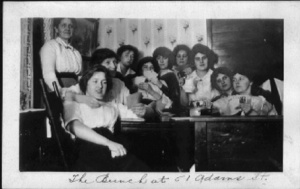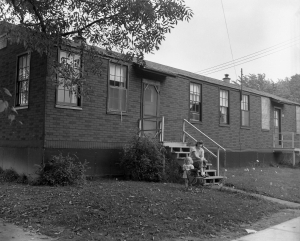In 1928 Principal Thompson worked with the Greek letter societies then at the school, in particular Phi Alpha Zeta, and a lunch room was opened in the building that served hot lunches. In 1941, when the old building was torn down and what we know as Hartwell Hall put up in its place, a cafeteria was provided for in the basement.
 Later on, as the campus expanded in the 1950s and '60s, separate buildings for dining were established. Pictured here are students in Harrison in 1970. Nowadays students and staff can enjoy the award winning services and food of BASC across campus.
Later on, as the campus expanded in the 1950s and '60s, separate buildings for dining were established. Pictured here are students in Harrison in 1970. Nowadays students and staff can enjoy the award winning services and food of BASC across campus.






